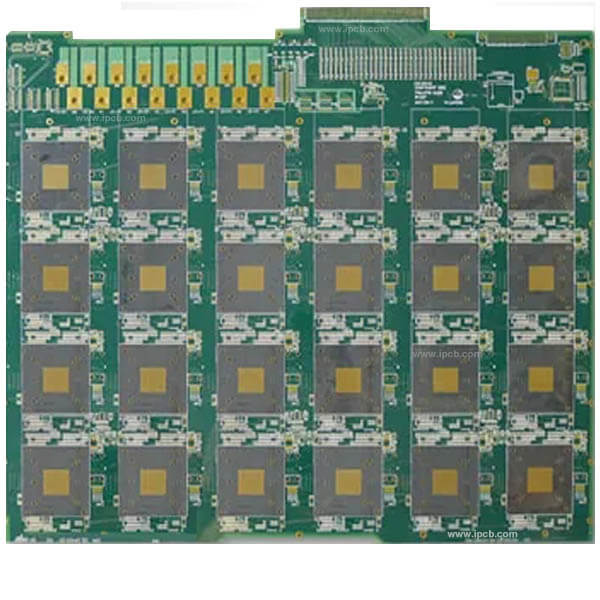The ink plays a role in protecting the copper foil during production, so that the copper skin will not be exposed, which will affect the subsequent processes. There are photosensitive inks, carbon oil, and silver oil. Both carbon oil and silver oil are conductive, and they are usually used. The ink colors are white oil, green oil, black oil, blue oil, red oil, and butter.
White oil is mostly printed with text and attached numbers on the FPC, such as diodes, etc.
Black oil is used on a large area on the surface of the FPC circuit to strengthen the mechanical ring strength of the FPC. (There is also a secret for keeping a certain part confidential)
Green oil is used for the solder joints to have an insulating effect, and generally there is no place to protect the glue when used on the FPC.
The important physical properties of ink are its viscosity, thixotropy and fineness. These physical properties need to be known to improve the ability to use ink.
Characteristics of ink
1. Stickiness and thixotropy
In the printed circuit board manufacturing process, screen printing is one of the indispensable important processes. In order to obtain the fidelity of image reproduction, the ink must have good viscosity and suitable thixotropy.
The so-called viscosity is the internal friction of the liquid, which means the friction force exerted by the inner layer of liquid when one layer of liquid slides on another layer of liquid under the action of external force.
The mechanical resistance encountered by the sliding of the thick liquid inner layer is greater, and the thinner liquid has less resistance. The unit of viscosity measurement is poise. In particular, it should be pointed out that temperature has a significant effect on viscosity.
Thixotropy is a physical property of a liquid, that is, its viscosity decreases under agitation, and it quickly restores its original viscosity after standing still. Through stirring, the effect of thixotropy lasts for a long time, enough to rebuild its internal structure.
To achieve high-quality screen printing results, the thixotropy of the ink is very important. Especially in the process of squeegee, the ink is agitated to make it liquefied.
This effect accelerates the speed of ink passing through the mesh, and promotes the uniform connection of the ink separated by the mesh. Once the squeegee stops moving, the ink returns to a static state, and its viscosity quickly returns to the original required data.
2. Fineness
Pigments and mineral fillers are generally solid, after fine grinding, their particle size does not exceed 4/5 microns, and forms a homogeneous fluid state in a solid form. Therefore, it is very important to require ink to have fineness.
Types of PCB ink
PCB inks are mainly divided into three types: circuit, solder mask, and character ink.

The PCB circuit ink is used as a barrier layer to prevent corrosion of the circuit, and to protect the circuit when etching, it is generally liquid photosensitive. There are two types of acid corrosion resistance and alkali corrosion resistance. The alkali resistance is more expensive. After this layer of ink has corroded the circuit, it must be dissolved with alkali.
Solder mask ink is used to protect the circuit after the circuit is completed. There are liquid photosensitive ones, heat curing ones, and ultraviolet hardening ones. The pads are reserved on the board to facilitate the soldering of components and play the role of insulation and anti-oxidation.
The character ink is used to mark the surface of the board, such as those marked with component symbols, which are generally white.
In fact, there are other inks, such as: peelable glue ink, which protects the parts that do not need to be treated during copper plating or surface treatment, and then can be peeled off; silver paste ink, etc.
Precautions for ink use
According to the actual experience of ink used by most manufacturers, the following regulations must be followed when using ink:
1. In any case, the temperature of the ink must be kept below 20-25°C, and the temperature cannot change too much, otherwise it will affect the viscosity of the ink and the quality and effect of the screen printing.
Especially when the ink is stored outdoors or at different temperatures, it must be placed in the ambient temperature for a few days before use or the ink tank can reach a proper operating temperature.
This is because the use of cold ink will cause screen printing failures and cause unnecessary trouble. Therefore, in order to maintain the quality of the ink, it is best to store or store in the process conditions at room temperature.
2. The ink must be fully and carefully mixed manually or mechanically before use. If air enters the ink, let it stand for a period of time when using it.
If you need to dilute, you must first mix it thoroughly, and then check its viscosity. The ink tank must be sealed immediately after use. At the same time, never put the ink on the screen back into the ink tank and mix with the unused ink.
3. It is best to use mutually compatible cleaning agents to clean the net, and it should be very thorough and clean. When cleaning again, it is best to use a clean solvent.
4. When the ink is dried, it must be carried out in a device with a good exhaust system.
5. In order to maintain the operating conditions, screen printing should be carried out in the operating field that meets the technical requirements of the process.